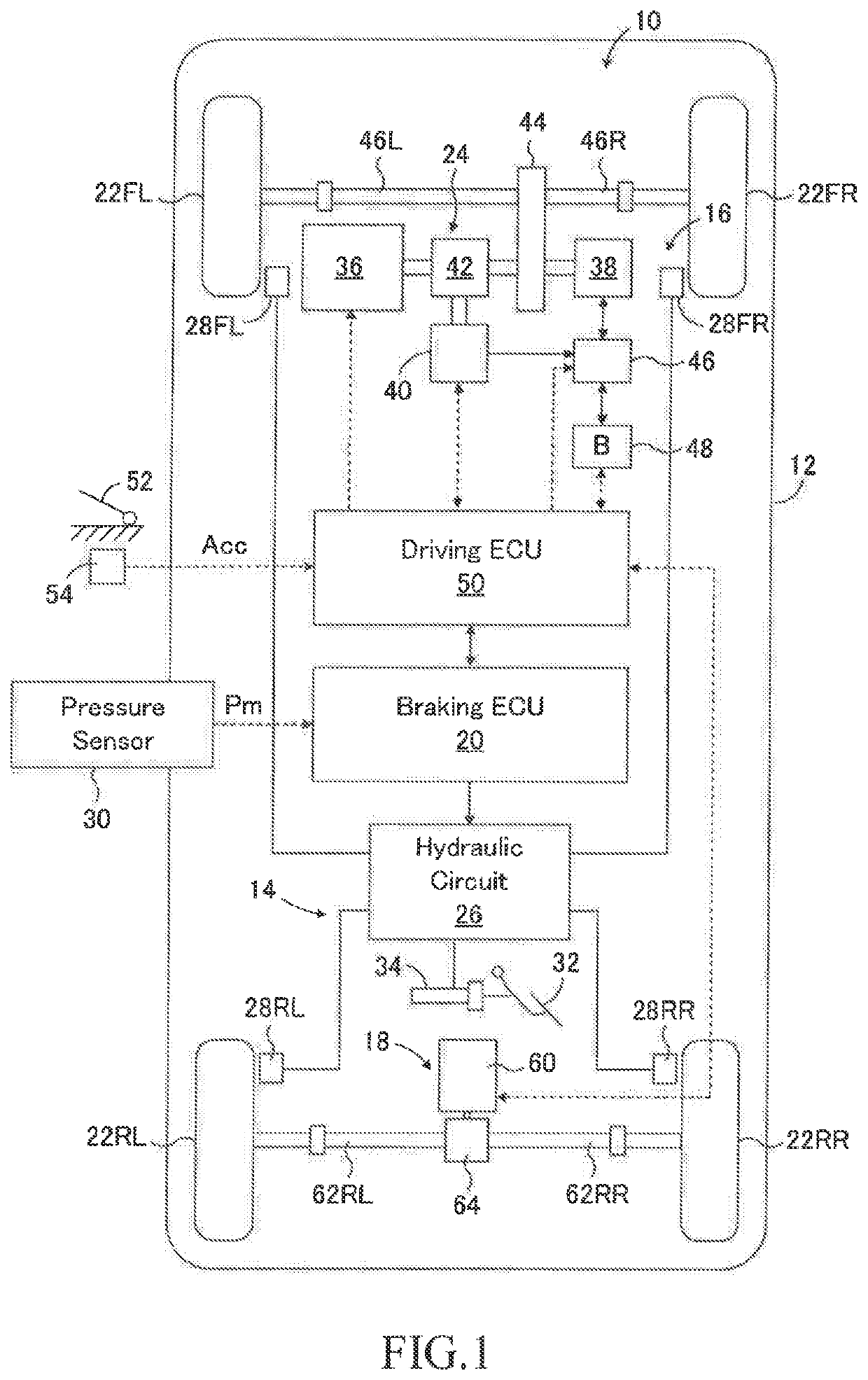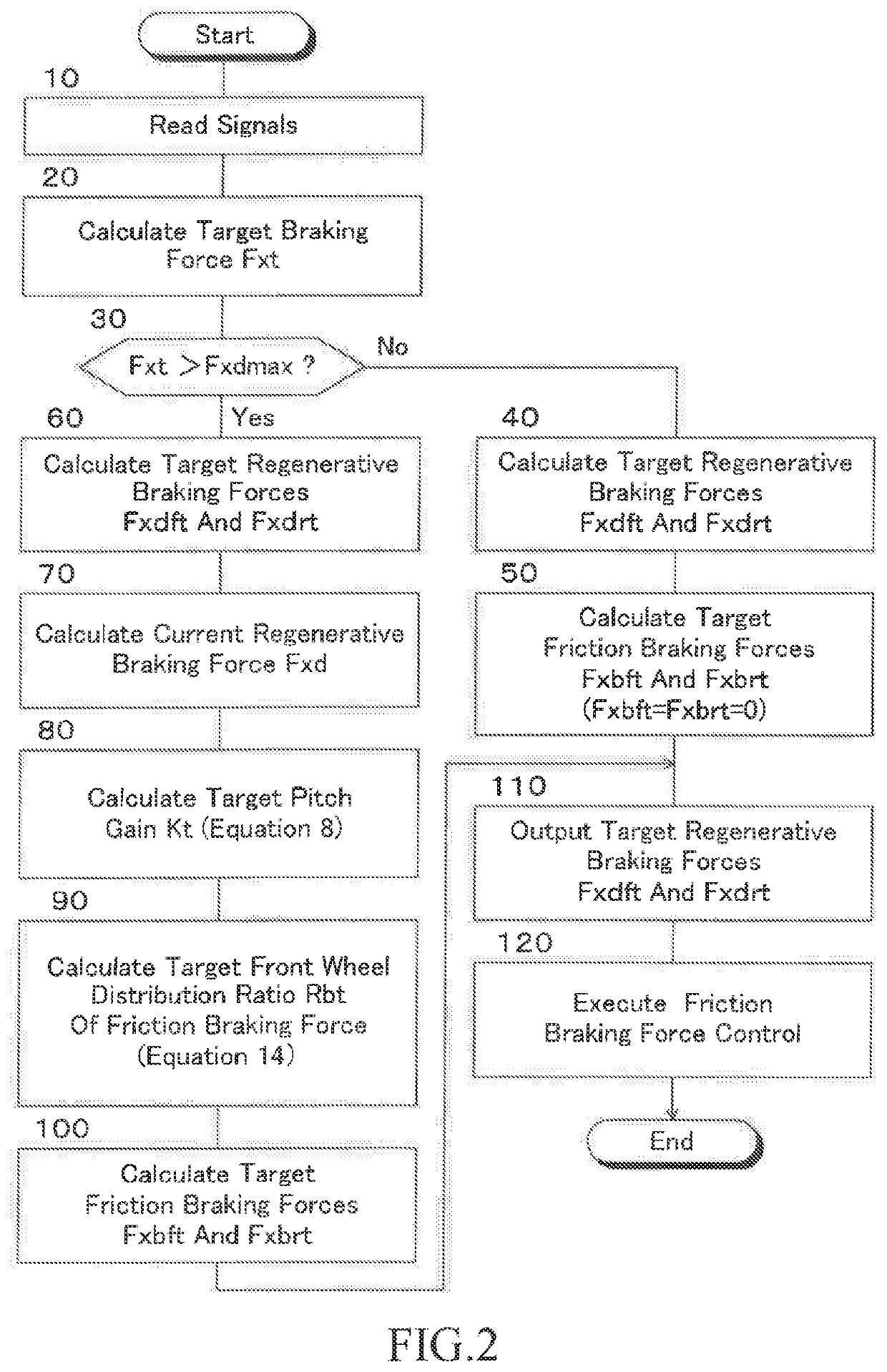Braking force control apparatus for vehicle
a technology of braking force control and vehicle, which is applied in the direction of braking systems, braking components, transportation and packaging, etc., can solve the problems of unnatural fluctuation of the pitch attitude of the vehicle, inability to limit the change gradient of regenerative braking force, and inability to effectively improve fuel economy
- Summary
- Abstract
- Description
- Claims
- Application Information
AI Technical Summary
Benefits of technology
Problems solved by technology
Method used
Image
Examples
embodiments
[0085]Next, some embodiments of the present disclosure will be described in detail.
first embodiment
[0086]As shown in FIG. 1, the braking force control apparatus 10 according to the first embodiment is adapted to a vehicle 12 with a hybrid system. The braking force control apparatus 10 includes a friction braking device 14, a front wheel regenerative braking device 16, a rear wheel regenerative braking device 18, a braking electronic control unit (ECU) 20 as a control device for controlling the friction braking device and the regenerative braking devices. The friction braking device 14 applies friction braking forces to left and right front wheels 22FL, 22FR and left and right rear wheels 22RL, 22RR. The front wheel regenerative braking device 16 is a part of the hybrid system 24 and applies a regenerative braking forces to the left and right front wheels 22FL and 22FR. The rear wheel regenerative braking device 18 applies regenerative braking forces to the left and right rear wheels 22RL and 22RR.
[0087]Although not shown in the drawing, the vehicle 12 has a center of gravity betw...
second embodiment
[0121]FIG. 9 is a schematic configuration diagram showing a second embodiment of the vehicle braking force control device according to the present invention having a front wheel regenerative braking device. In FIG. 9, the same members as those shown in FIG. 1 are assigned to the same reference numerals as those shown in FIG. 1. This also applies to the later-described third embodiment.
[0122]In the second embodiment, the rear wheel regenerative braking device 18 in the first embodiment is not provided. Therefore, no regenerative braking force is applied to the left and right rear wheels 22RL and 22RR, and the regenerative braking forces are applied only to the left and right front wheels 22FL and 22FR by the front wheel regenerative braking device 16. The other points of this embodiment are the same as those of the first embodiment.
[0123]In the second embodiment, the braking force control is executed according to the braking force control program corresponding to the flowchart shown ...
PUM
 Login to View More
Login to View More Abstract
Description
Claims
Application Information
 Login to View More
Login to View More - R&D
- Intellectual Property
- Life Sciences
- Materials
- Tech Scout
- Unparalleled Data Quality
- Higher Quality Content
- 60% Fewer Hallucinations
Browse by: Latest US Patents, China's latest patents, Technical Efficacy Thesaurus, Application Domain, Technology Topic, Popular Technical Reports.
© 2025 PatSnap. All rights reserved.Legal|Privacy policy|Modern Slavery Act Transparency Statement|Sitemap|About US| Contact US: help@patsnap.com



